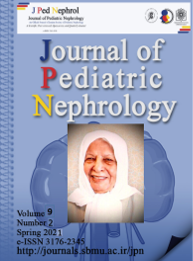Background and Aim: Recent recommendations are to use isotonic fluid as maintenance intravenous fluid (mIVF) in children. The most commonly prescribed fluid is 0.9% NS (normal saline) but there are concerns about hypernatremia, fluid overload and hyperchloremic metabolic acidosis leading to increased morbidity and even mortality mainly due to its adverse effects on kidneys. This study was conducted to assess the clinical and biochemical effects of 0.9% sodium chloride as an isotonic mIVF in the general non-critically ill pediatric patients.
Methods: This observational study was conducted on admitted children requiring mIVF for a minimum 24 hours. Changes in the blood pressure and biochemical parameters like serum sodium, serum chloride and bicarbonate were evaluated and the incidence of hypo/hypernatremia, hyperchloremia and metabolic acidosis was calculated at 24 and 48 hours from baseline.
Results: Two hundred and fifty children were analyzed. The mean age of the patients was 3.79±3.2 years with majority (43.6%) in the age group 2 months- 1 year. There was no significant change in BP at any time point. The mean serum chloride level was 103.81±4.717, 104.5±4.581, and 105.28±4.545 at baseline, 24 hours and 48 hours respectively with a significant rise at 48 hours of mIVF (p-value< 0.001) and among 3 time points (p-value<0.01]. There was a significant decrease in the bicarbonate level at 48 hours from baseline (p<0.05).
Conclusion: According to the results, 0.9% NS as mIVF in non-critically ill pediatric patients causes a significant increase in the serum chloride level leading to hyperchloremia and metabolic acidosis.

